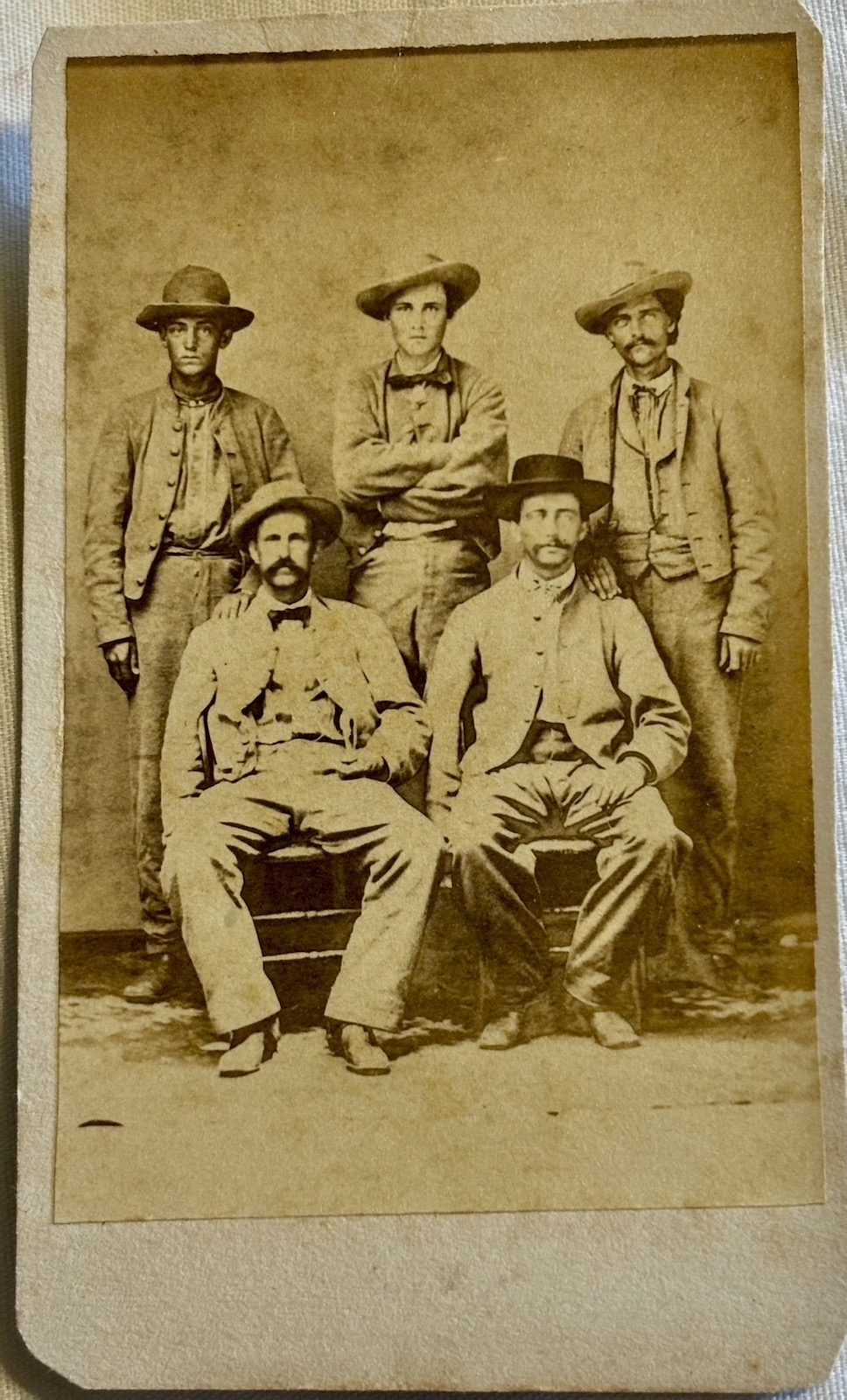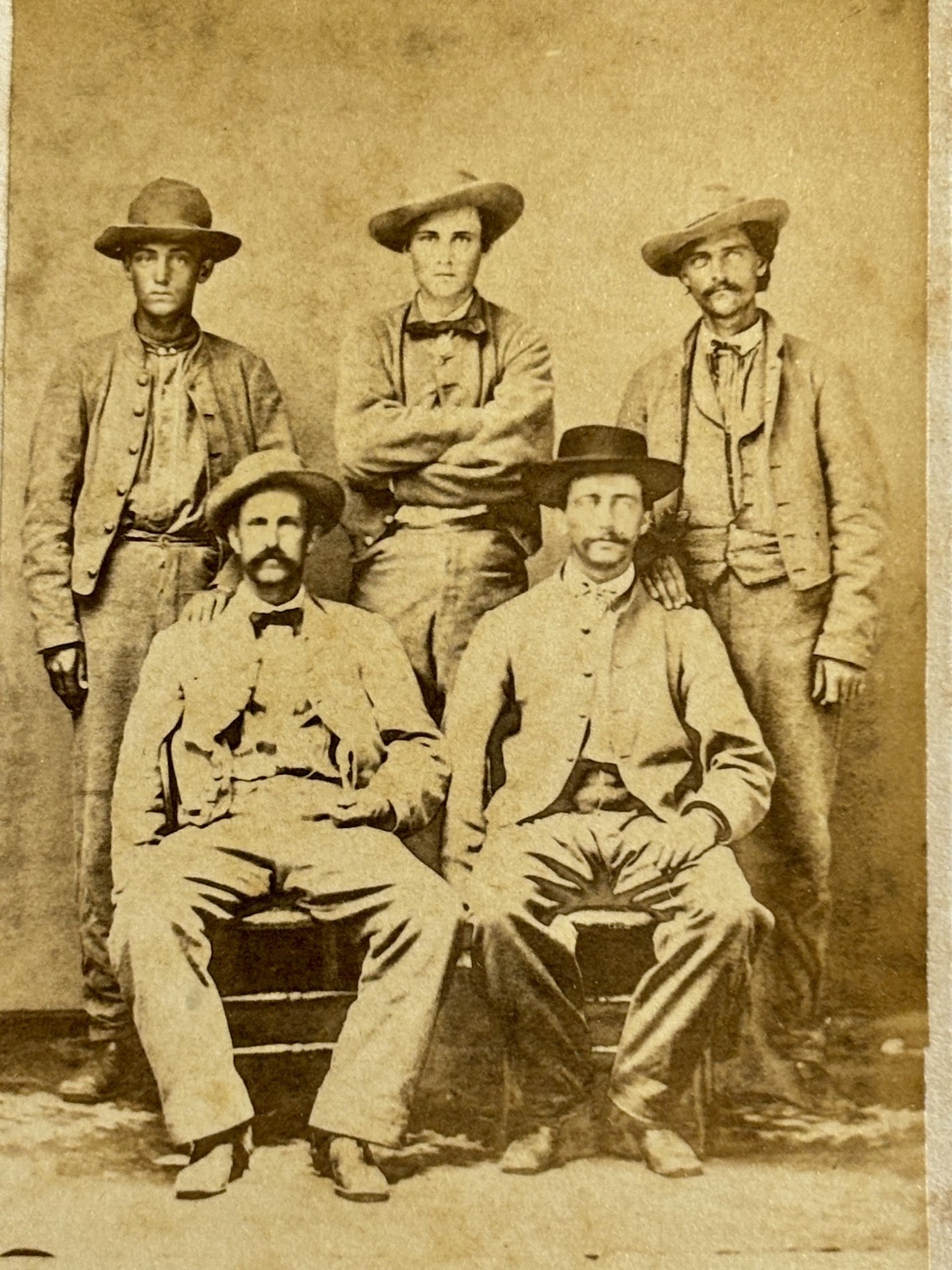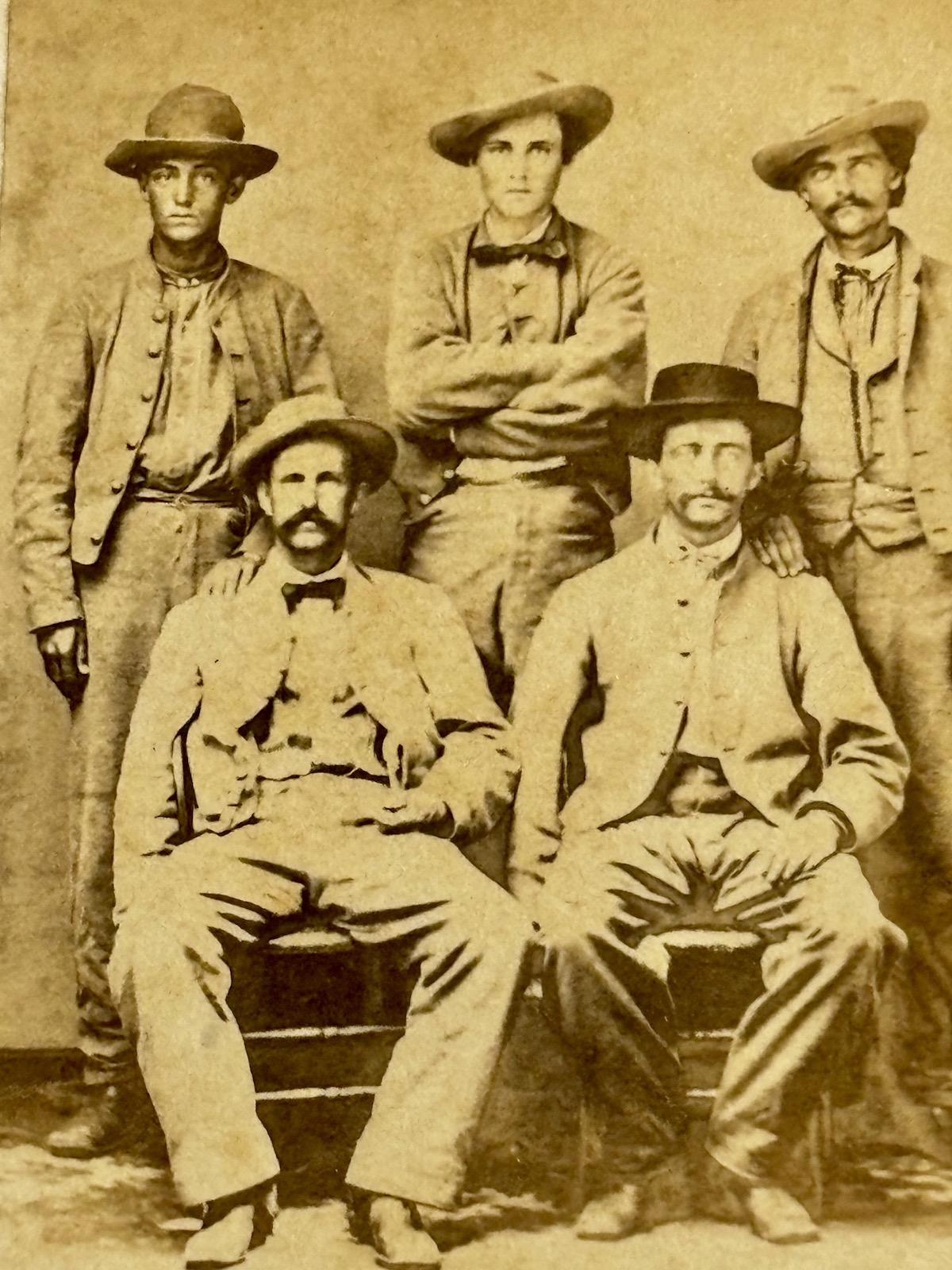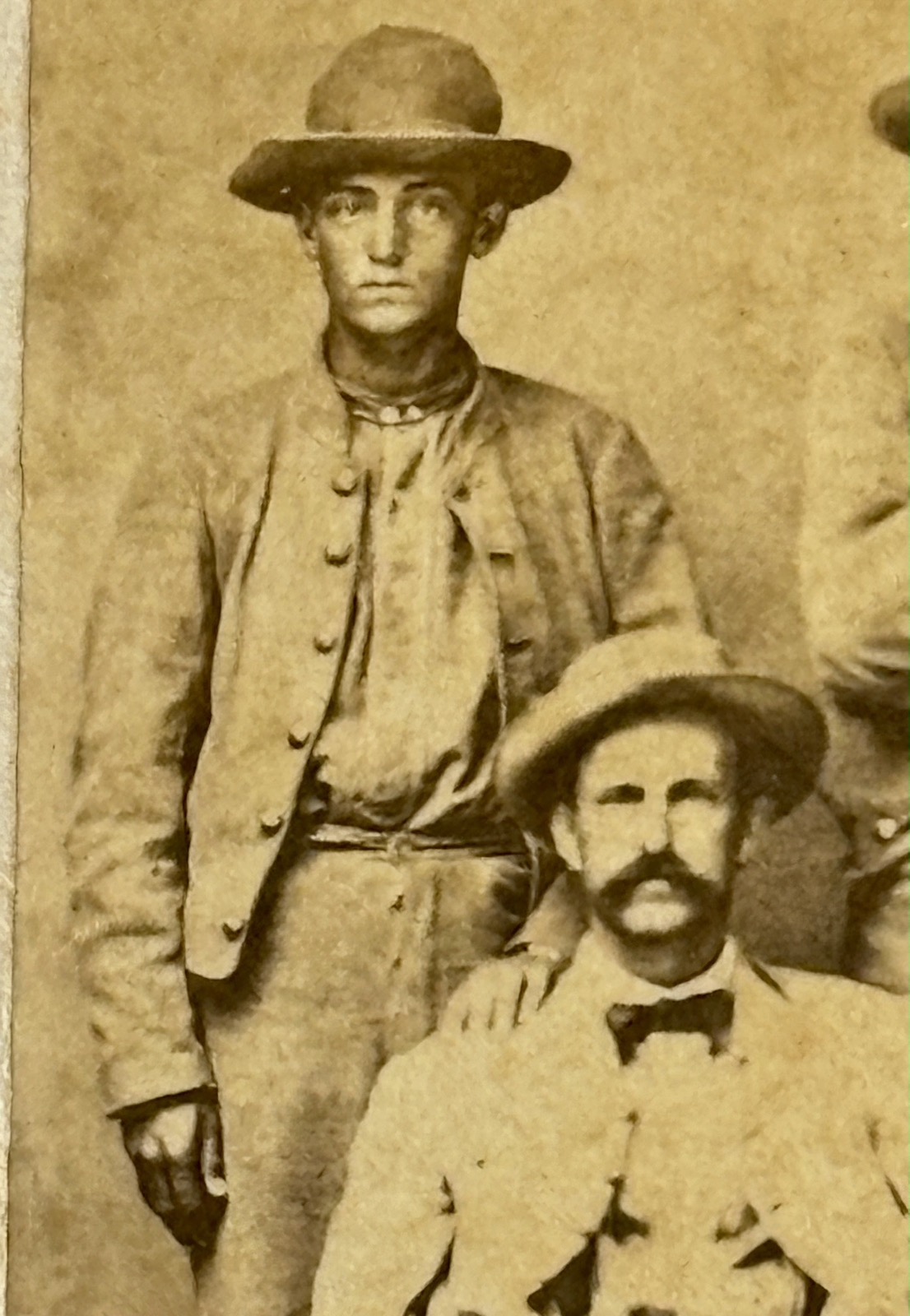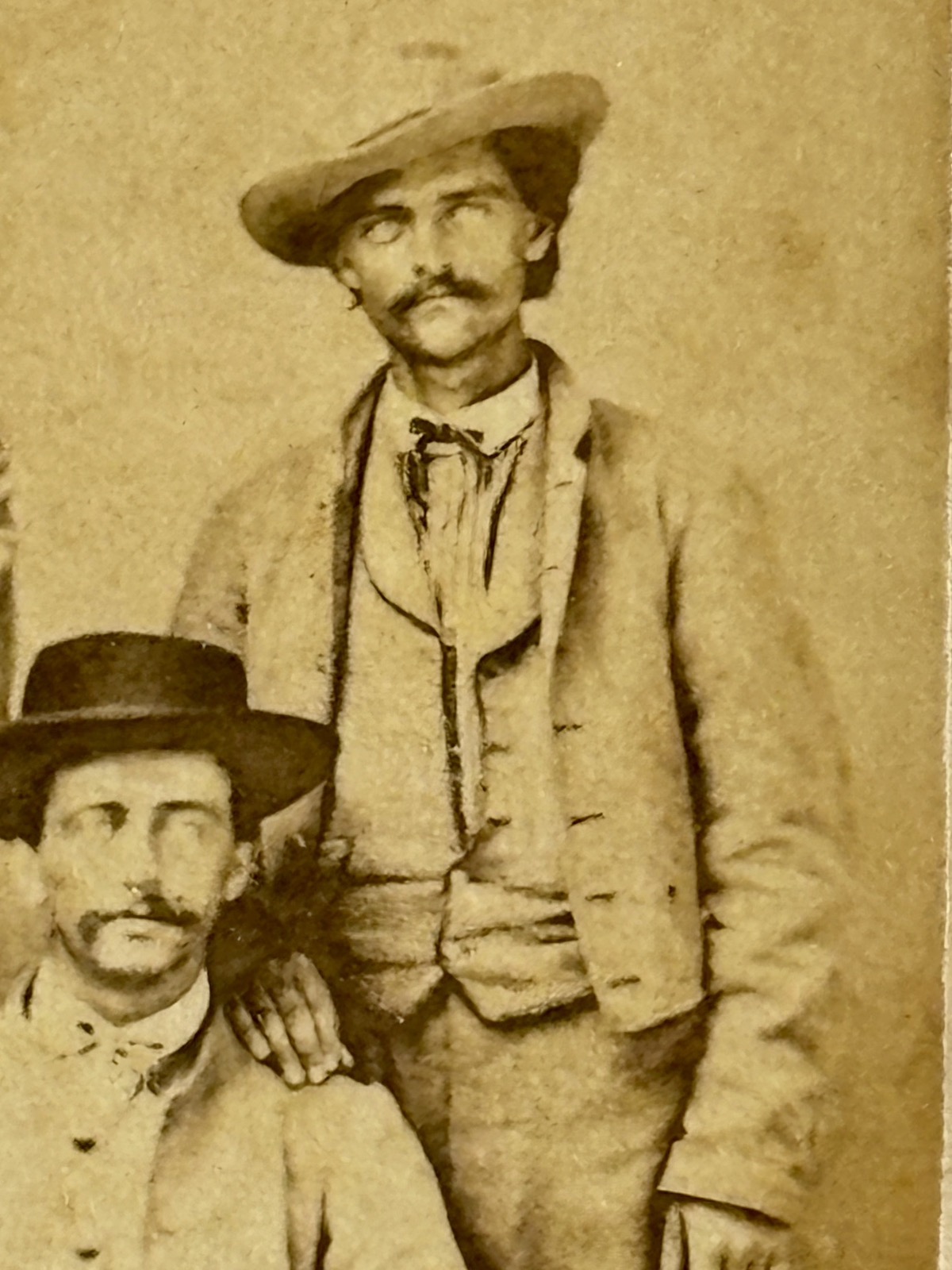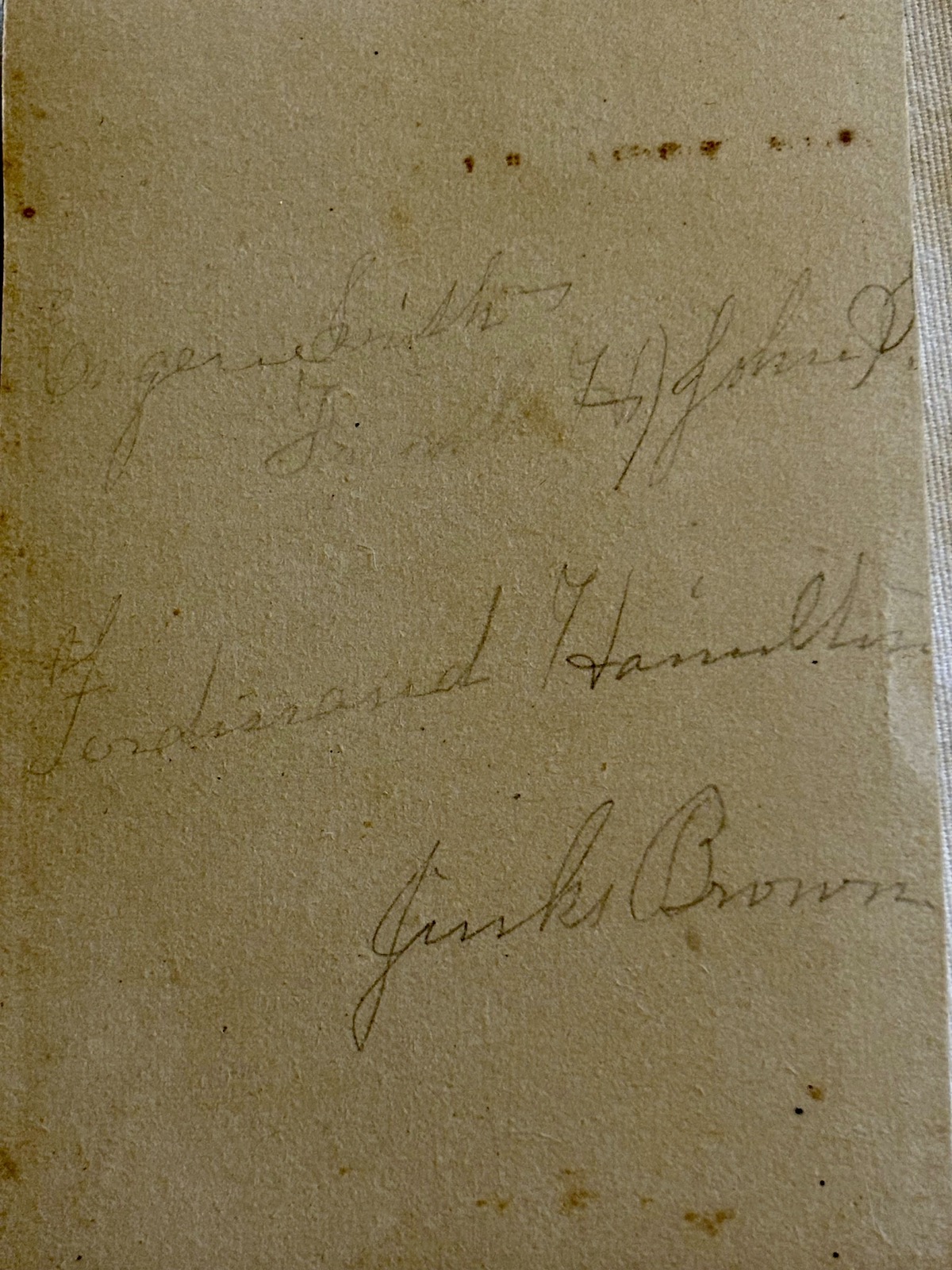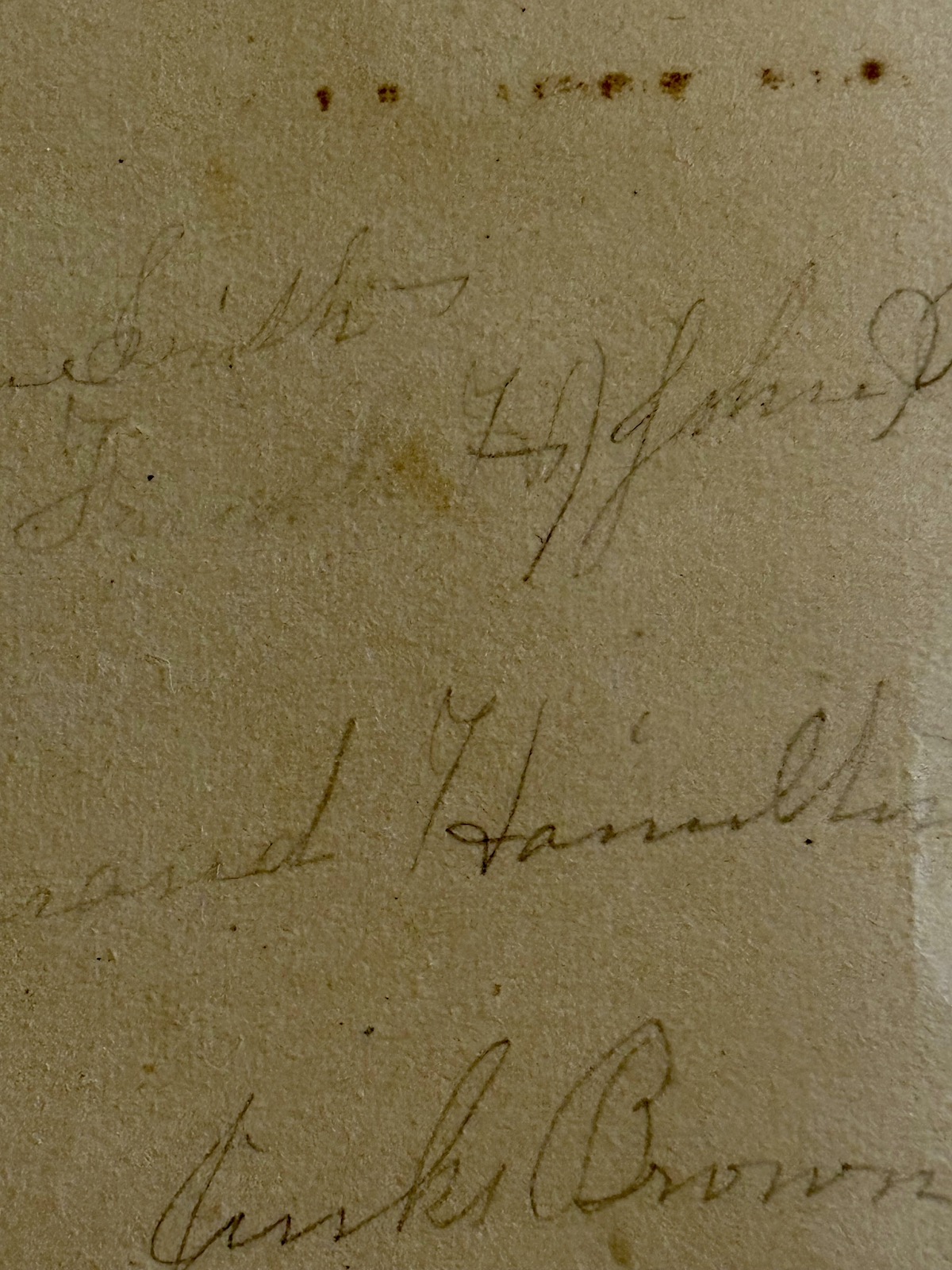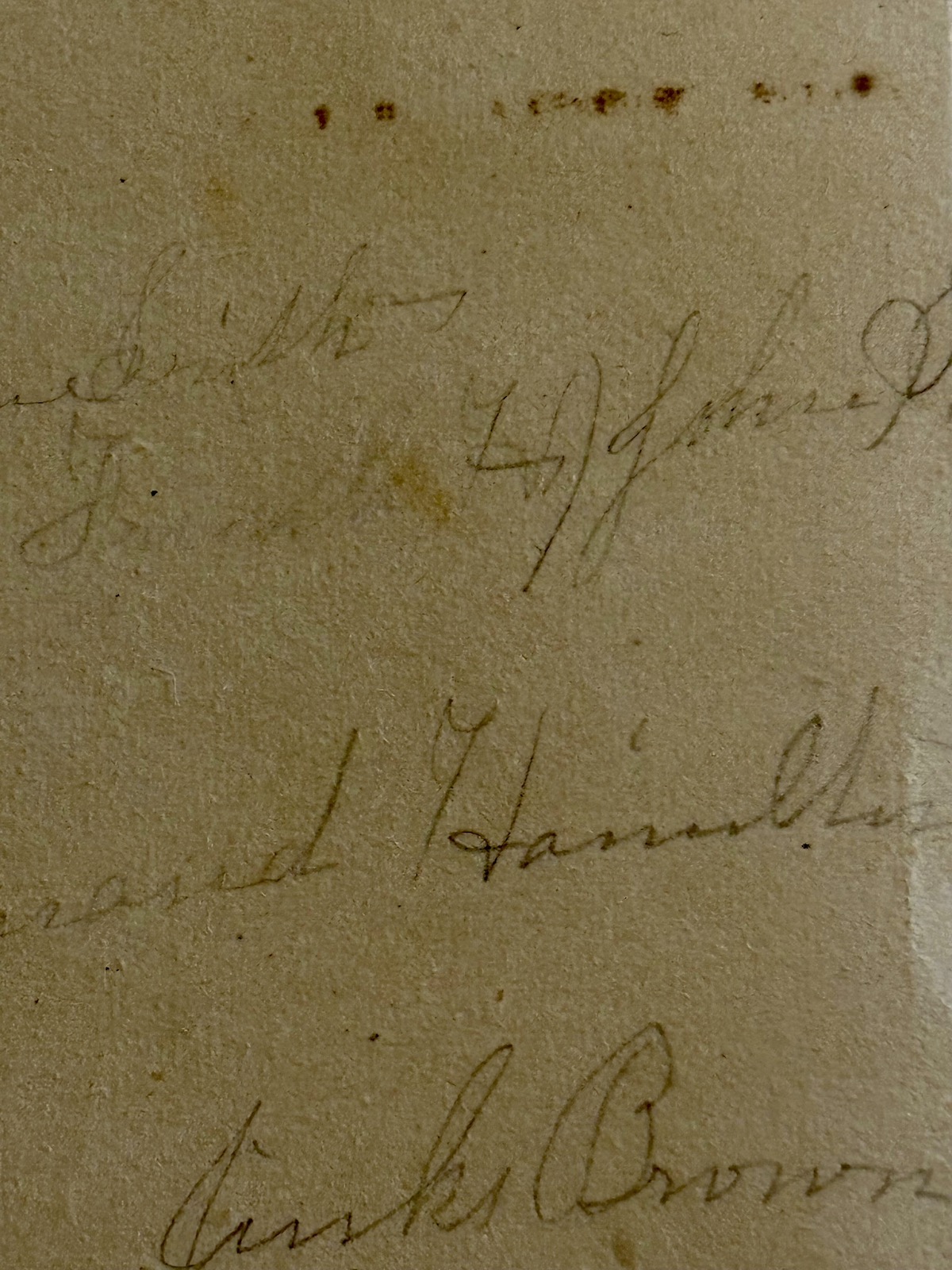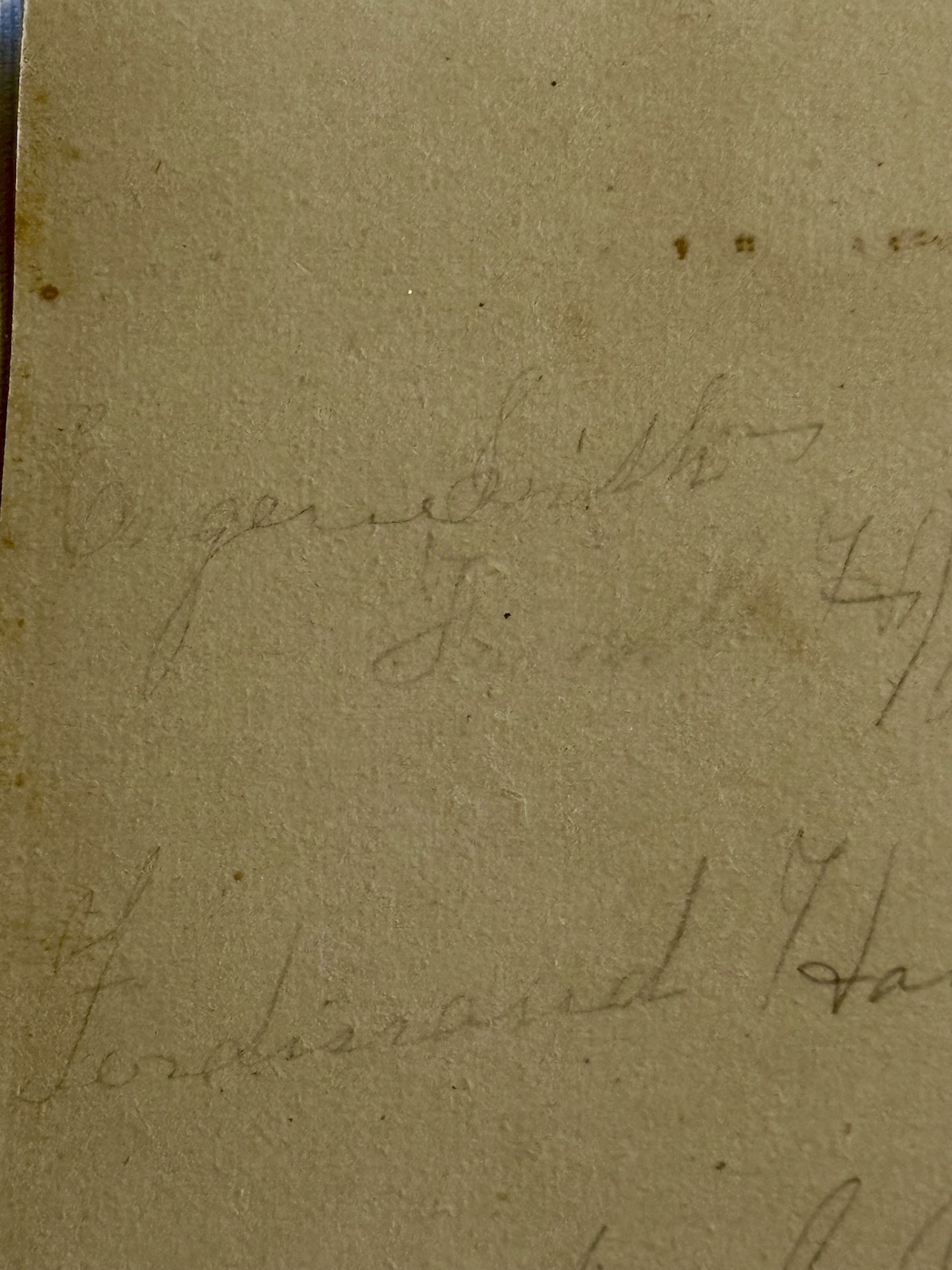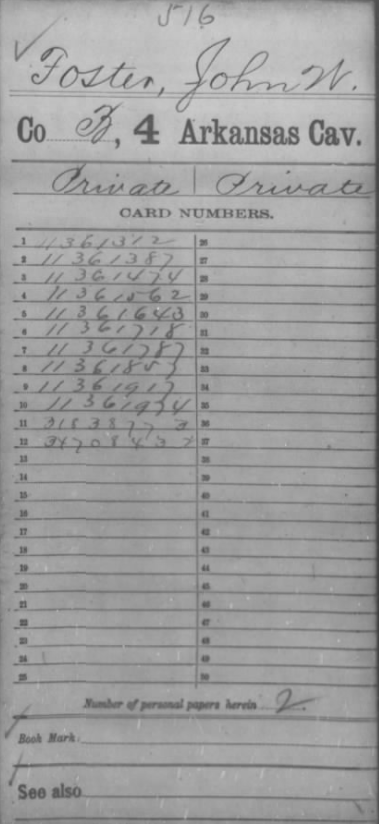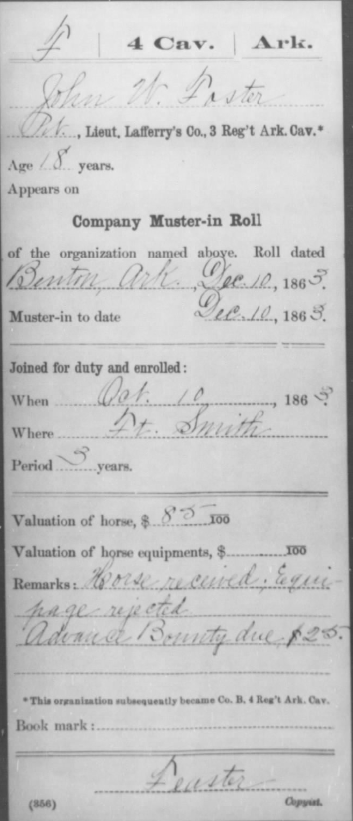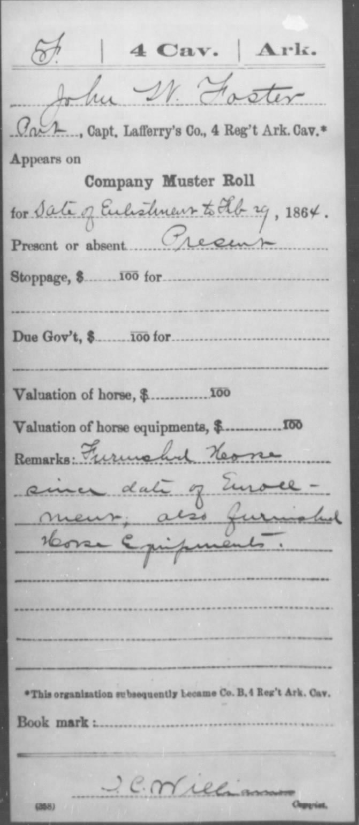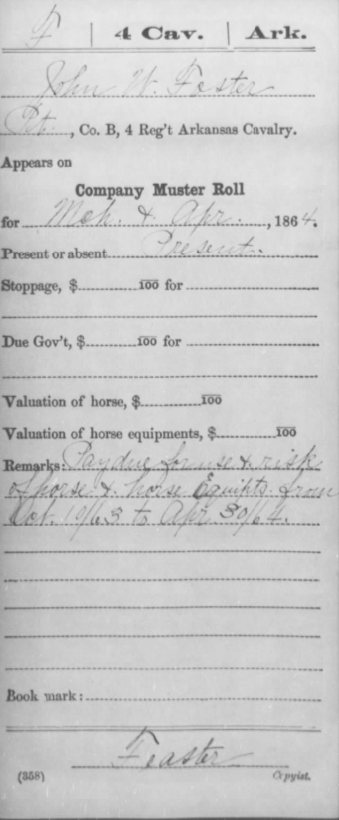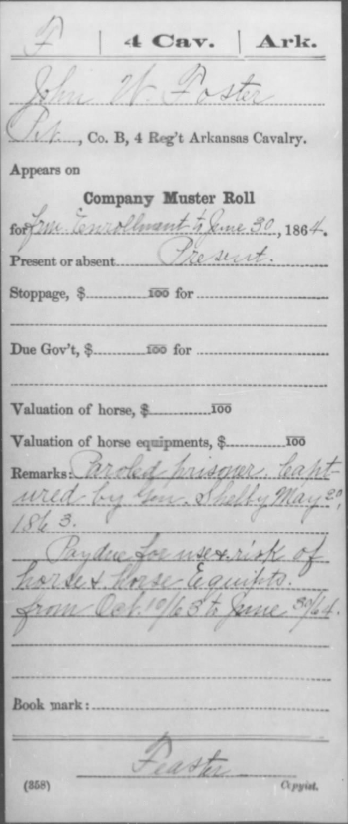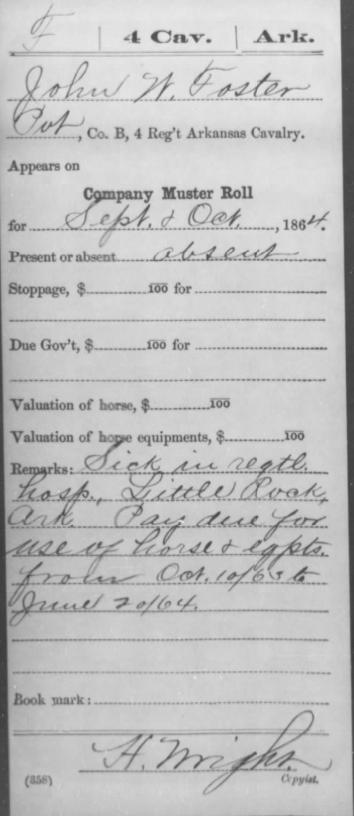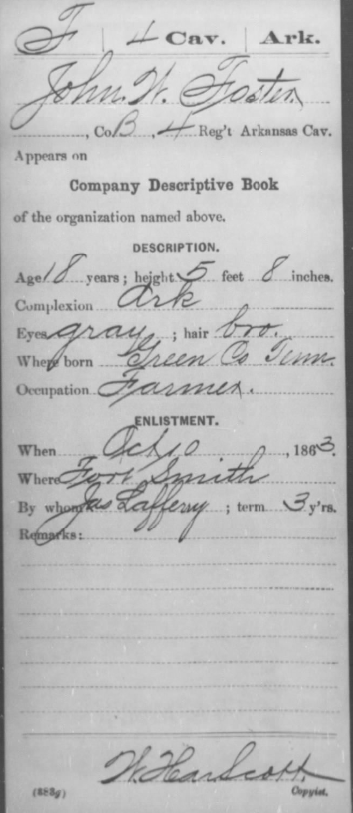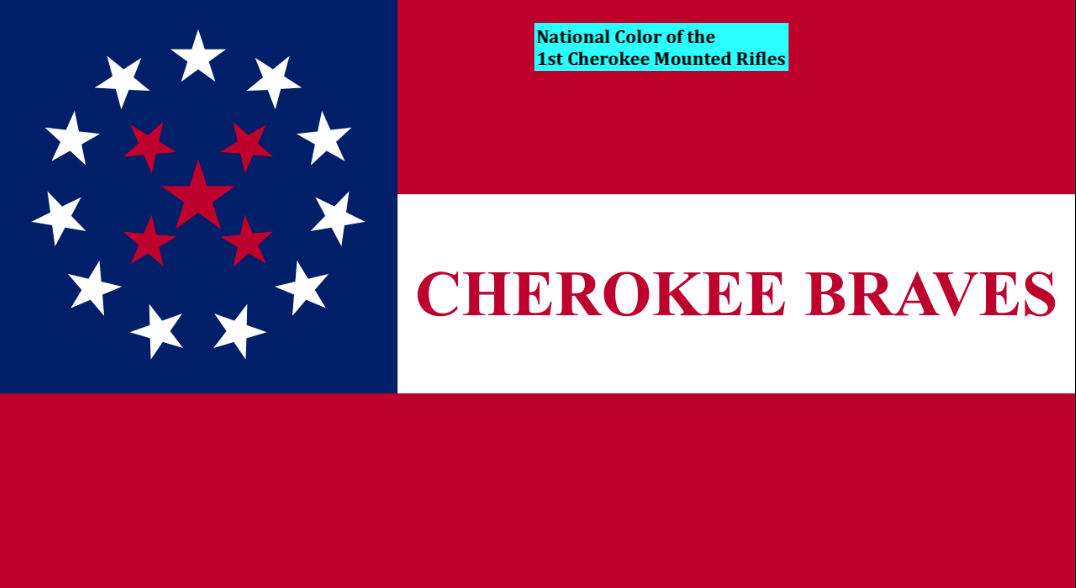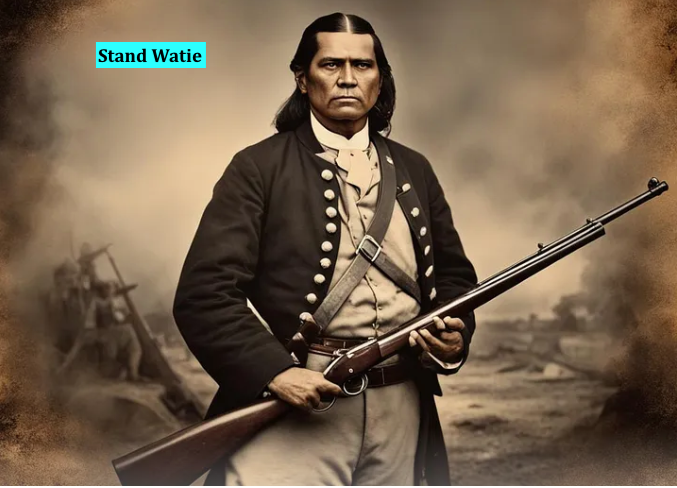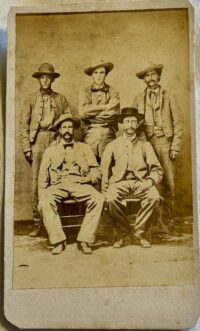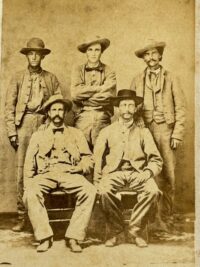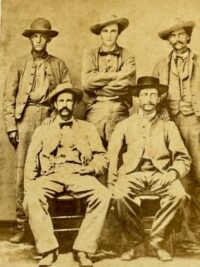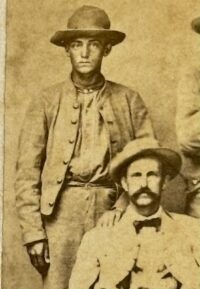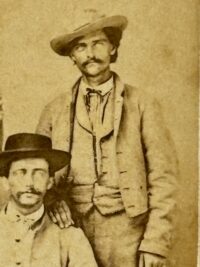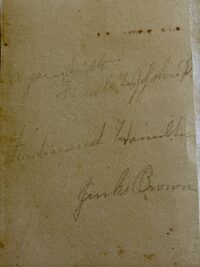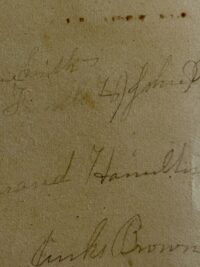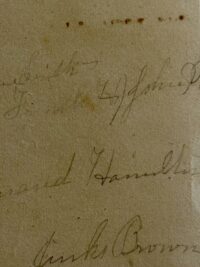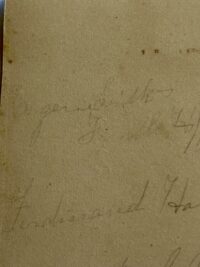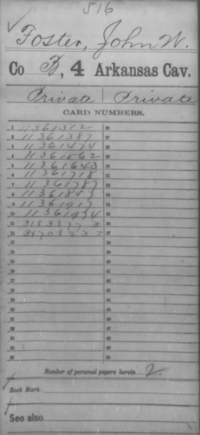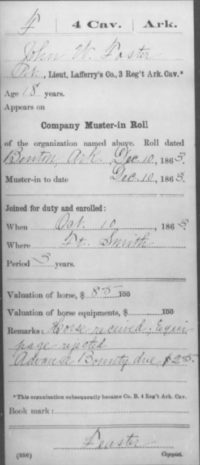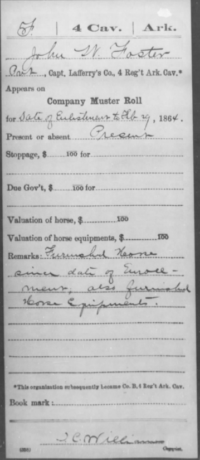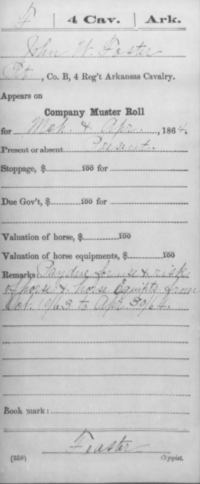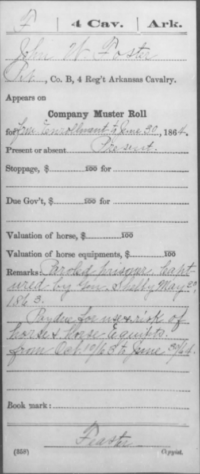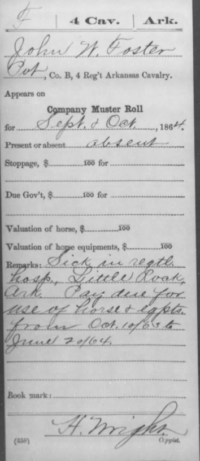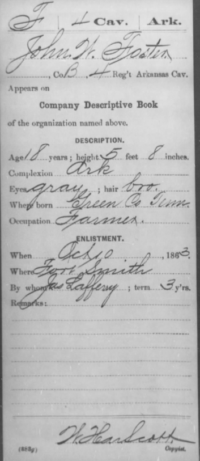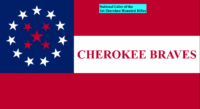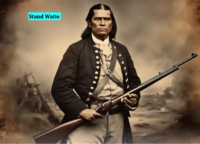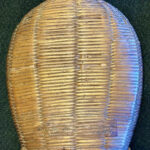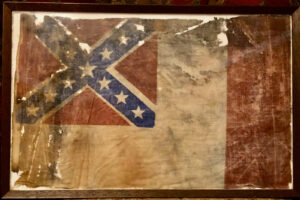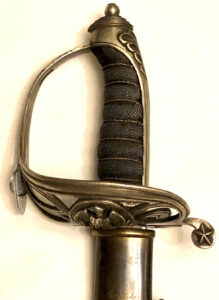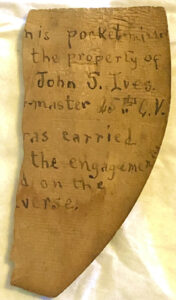Rare CDV of Id’d Group of Confederate Arkansas Soldiers
$4,150
Rare CDV of Id’d Group of Confederate Arkansas Soldiers – This rare CDV was found at an estate sale, recently, near Bedford, Virginia and brought to us by the purchaser, along with additional rare, Confederate, Arkansas images. This image, depicting five Confederates, all wearing what appear to be shell or short jackets, has four names penciled on the back (there is no photographer’s back mark); the names written are: Eugene Smith; then a currently indecipherable name – additional and ongoing research required; Ferdinand Hamilton and Jinks Brown. The original buyer of this image posted it on Facebook shortly after his initial purchase; the posting immediately elicited a response from the 4th great grandnephew of the soldier standing in the top right of the image; the responding descendant identified the soldier as – John Washington Foster – the grandnephew indicated (see the text of the posted comment) that Foster had served with the Cherokee Confederate leader, Stand Watie. Three of the identified men were from Arkansas, and two, we discovered, served in the 4th Arkansas Cavalry. All the soldiers depicted in the image are wearing military style, Confederate shell jackets, with what appear to be brass buttons; all are wearing period, slouch style hats. The image remains in excellent condition, with strong resolution. To find an Id’d, group CDV of Confederate cavalrymen is exceedingly rare, especially with one in the image having served with Stand Watie; it is conceivable that all of the Confederate soldiers from Arkansas in this CDV, may have served with the 1st Cherokee Mounted Rifles, under General Stand Watie.
William Hamilton (middle name of Ferd or Ferdinand Hamilton)
| Residence was not listed; Enlisted on 12/15/1863 as a Private. On 12/15/1863 he mustered into “B” Co. AR 4th Cavalry (date and method of discharge not given) (Estimated date of enlistment) |
Capt Ferd W Hamilton
BIRTH
29 Apr 1845
DEATH
15 Feb 1898 (aged 52)
BURIAL
Little Rock, Pulaski County, Arkansas, USAAdd to Map
PLOT
Rees Pritchard lot
| Name | Eugene B Smith | ||||||||||||||||||||||||
| Gender | Male | ||||||||||||||||||||||||
| Race | White | ||||||||||||||||||||||||
| Age | 8 | ||||||||||||||||||||||||
| Birth Year | abt 1842 | ||||||||||||||||||||||||
| Birthplace | Arkansas | ||||||||||||||||||||||||
| Home in 1850 | Fort Smith, Crawford, Arkansas, USA | ||||||||||||||||||||||||
| Attended School | Yes | ||||||||||||||||||||||||
| Line Number | 21 | ||||||||||||||||||||||||
| Dwelling Number | 24 | ||||||||||||||||||||||||
| Family Number | 24 | ||||||||||||||||||||||||
| Inferred Father | John P Smith | ||||||||||||||||||||||||
| Inferred Mother | Julia A Smith | ||||||||||||||||||||||||
|
|||||||||||||||||||||||||
Military Unit
Fourth Cavalry, De-G
Full Name
Foster, John W
Age
18
Year
1863
Estimated Birth Year
1844 – 1845
Conflict Period
Civil War (Confederate)
Branch
Confederate Army
Served For
Confederate States
| Name | Jenks Brown |
| Death Date | 10 Oct 1877 |
| Cemetery | Fairview Cemetery |
| Burial or Cremation Place | Van Buren, Crawford County, Arkansas, United States of America |
4th AR Cavalry
| Organized: on 12/15/63 Mustered Out: 5/26/65 |
| From | To | Brigade | Division | Corps | Army | Comment |
| Dec ’63 | Jan ’64 | Cabell’s | Marmaduke’s Cavalry | District of AR | Trans-Mississippi Department | |
| Apr ’64 | Aug ’64 | Cabell’s | Fagan’s Cavalry | District of AR | Trans-Mississippi Department | |
| Aug ’64 | May ’65 | 1st Arkansas Cavalry | 1st Arkansas Cavalry | Price’s Cavalry | Trans-Mississippi Department |
4th or Gordon’s Arkansas Cavalry Rgt.
| Cols. Charles A. Carroll, Lee L. Thomson, Anderson Gordon,
Lt Col. J. A. Johnston, Majs. J. A. Arrington, William H. Fayth
The regiment was originally organized in the summer of 1861 as Carroll’s Cavalry Rgt. and was also called the 1st and 2nd Ark. Cavalry Rgt. The unit served in the Army of Arkansas then the Trans-Mississippi Department and fought at Wilson’s Creek, Mo., Prairie Grove, Spring-field and Devil’s Backbone. In September 1863 it was reorganized and became Gordon’s Arkansas Cavalry Rgt. The regiment was assigned to Cabell’s brigade, Trans-Mississippi Department and fought at Poison Spring and Marks’ Mills where it lost 21 percent of the 117 engaged. It was in Price’s 1864 Missouri expedition and reported 106 casualties. It disbanded in the spring of 1865. |
1st Cherokee Mounted Rifles
The 1st Cherokee Mounted Rifles (also known as the 1st Arkansas Cherokee Mounted Rifles and the “Cherokee Braves”) was a cavalry formation of the Confederate States Army in the Trans-Mississippi Theater of the American Civil War.
Formation
After Cherokee Principal Chief John Ross signed a treaty of alliance with the Confederate States in October 1861, he and the Cherokee Council authorized the formation of the 1st Cherokee Mounted Riflemen, to be commanded by Colonel John Drew.[1] Most of the riflemen of the newly formed regiment were ideologically uncommitted to the goals of the Confederacy, but were loyal to Ross.[a]
Drew’s regiment became part of Colonel Cooper’s command and was ordered to help stop the flight of Union-supporting Creeks, led by their principal chief Opothleyahola, who were attempting to flee to Kansas. Although the unit participated in the Battle of Round Mountain, the Battle of Chusto-Talasah, and the Battle of Chustenahlah, they made known their dislike for fighting the Creeks, who had done the Cherokees no harm. They had expected to be fighting the invading Yankees, instead.
Consolidation
A portion of Drew’s regiment deserted in late 1861. Following the Battle of Old Fort Wayne in October 1862, most of the remainder of Drew’s men, including Maj. Thomas Pegg, deserted to the Union army. What remained of his troops were consolidated with 2d Cherokee Mounted Rifles and reorganized as the 1st Regiment of Cherokee Mounted Rifles with Stand Watie in command.[2]
1862–1865
During the war, Watie’s troops participated in twenty-seven major engagements and numerous smaller skirmishes. Although some of the engagements were set-piece battles, most of their activities utilized guerrilla tactics. Watie’s men launched raids from south of the Canadian River throughout northern-held Indian Territory and into Kansas and Missouri, tying down thousands of Union troops. Poorly equipped and armed mostly with castoff rifles or captured weapons, the Cherokees were well suited to this type of warfare. Watie was promoted to brigadier general in May 1864.[3]
Watie’s most spectacular victories included the Ambush of the steamboat J. R. Williams, in June 1864,[3] and the capture of a Union wagon train at the Second Battle of Cabin Creek in September 1864. His three most infamous actions were the burning of Rose Cottage, home of Chief John Ross, and the Cherokee Council House in October 1863, and the massacre of detachments of the First Kansas Colored Infantry and 2nd Regiment Kansas Volunteer Cavalry at the Hay Camp Action (a.k.a. the Battle of Flat Rock) in September 1864.[4]
In February 1865 Stand Watie was given command of the Indian Division of Indian Territory but was unable to launch any offensive operations. He released most of his troops following the collapse of Confederate resistance in the spring of 1865. After participating in the Camp Napoleon Council in May, Stand Watie officially surrendered on June 23, 1865, becoming the last Confederate general to lay down his arms. The regiment was disbanded.
| Active | 1861–1865 |
| Disbanded | June 23, 1865 |
| Country | Confederate States |
| Allegiance | Cherokee Nation |
| Branch | Army |
| Type | Mounted Rifles |
| Size | Regiment |
| Part of | 1st Indian Brigade |
| Nickname(s) | “Cherokee Braves” |
| Arms | |
| Battles | |
| Commanders | |
| Commanding officers |
|


